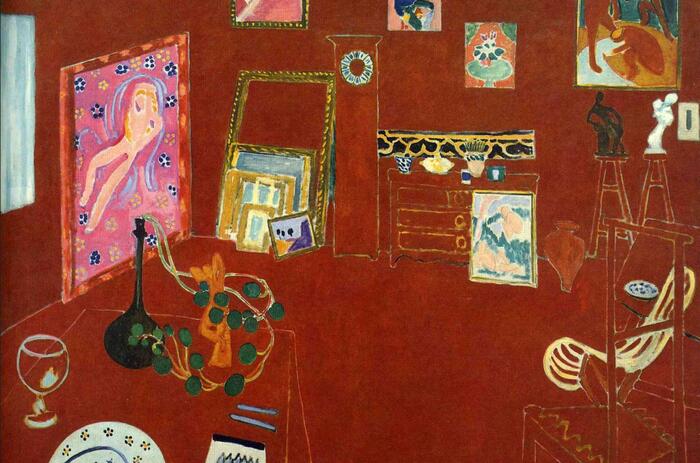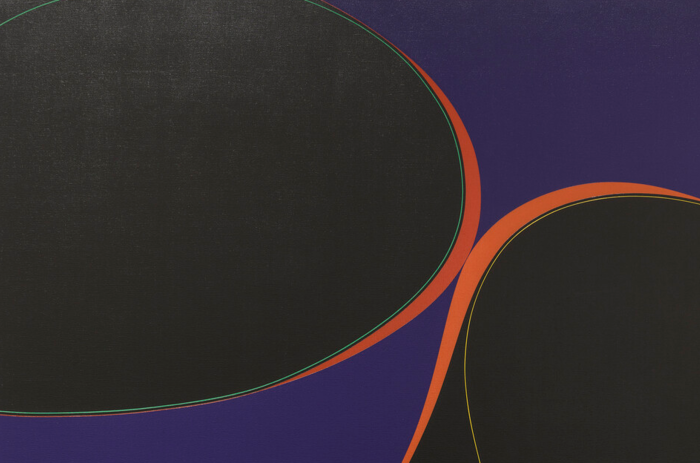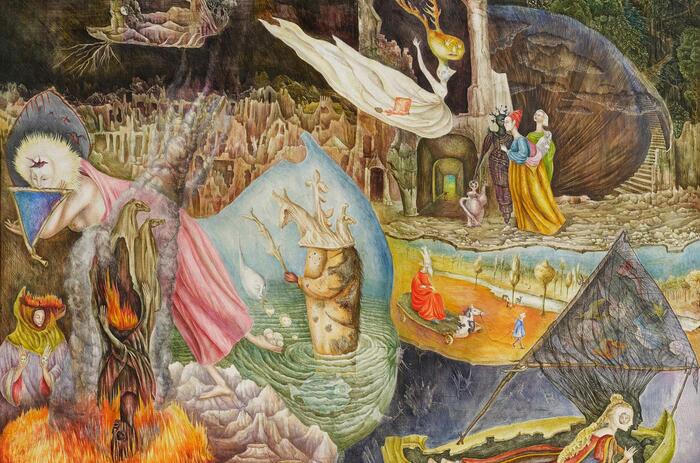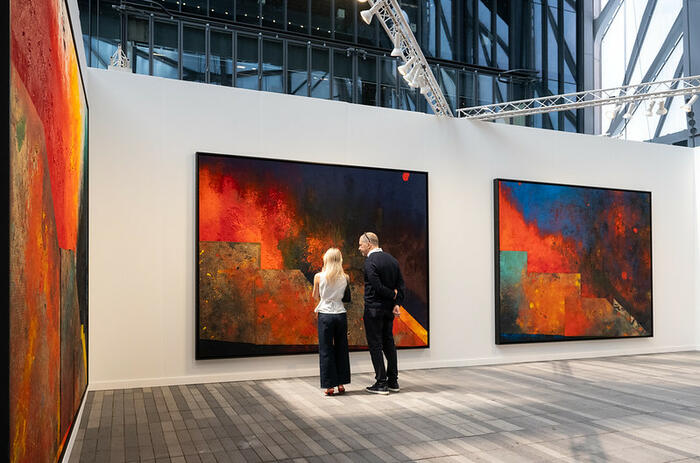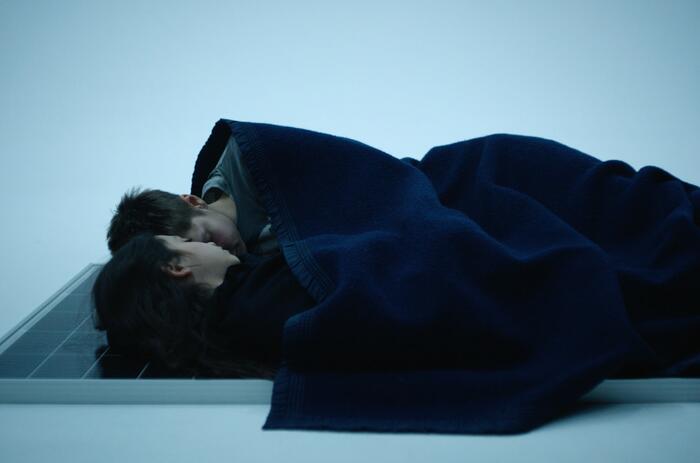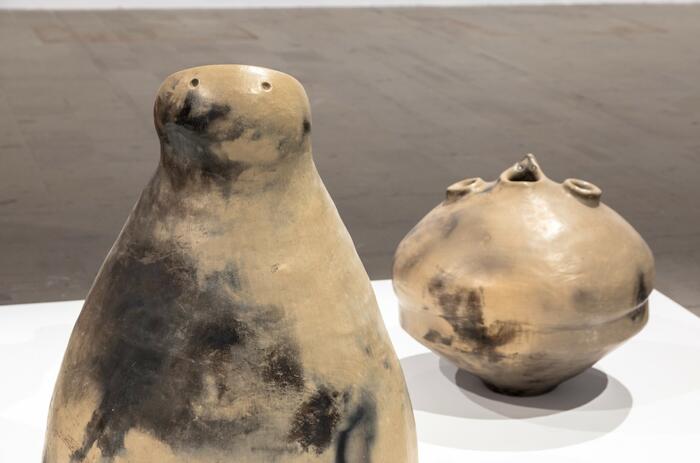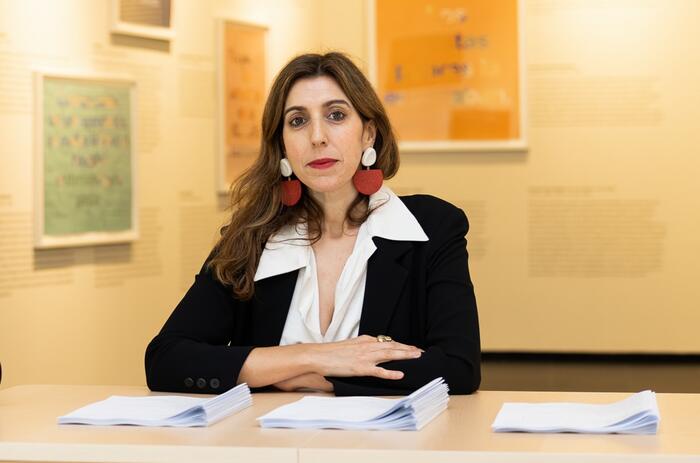TRÁMITES: PROTOCOLS AND STRATEGIES TO EXIST IN EMERGENCIES
On Thursday, April 18, 2024, the exhibition project Trámites, a duo-show by visual artists Yéssica Montero (1998, Dominican Republic) and Ernesto Rivera (1983, Dominican Republic), opened at the independent spaces of La Sociedad, in Santo Domingo.
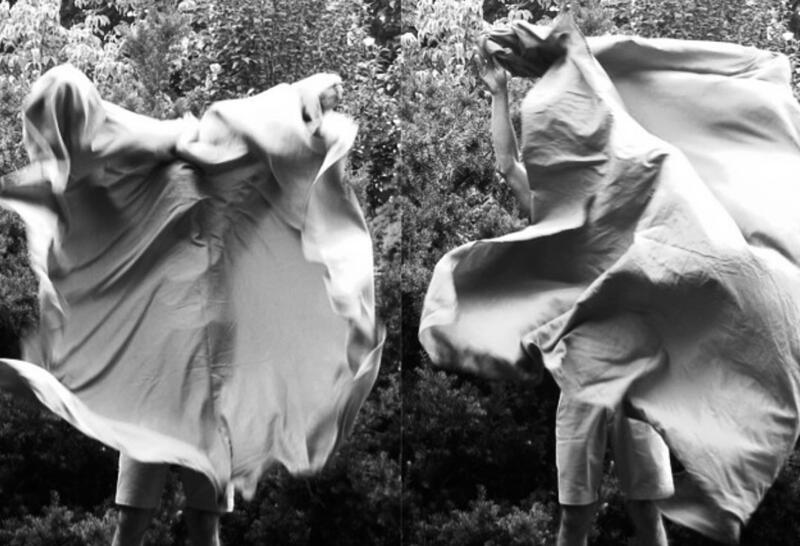
The exhibition, organized by artist Elisa Bergel Melo and supported by La Cooperativa and the Pardo platform, is the first of a series of exhibitions that seek to generate dialogues between young and emerging Caribbean artists, in the midst of a scene full of absences and lacking opportunities for new creators and art workers.
-
Yéssica Montero: Bruma y cenizas ll, 2023. Carboncillo, tinta y pastel sobre papel. 16.5”x23"
Every historical meaning involves a deep and continuous sense of crisis.
Let's start from the enunciated certainty and situate ourselves in the reality of such condition, apparently perennial and with no foreseeable improvement: daily we assume emergence as a protocol of an extended and successive actuality; a crisis that precarizes and keeps our conscience of continuity in suspense, but that -understood as action and effect of emerging- can in turn represent for few beings a possibility of “building from the bad days of the present, [and] not from the good days of the past” (Foster, 2017).
For those of us who inhabit these times, assuming this existential, contingent and continuously active condition requires developing a series of contemporary procedures that, as naturalized logistics, establish a system of daily chores of a transgenic, wireless nature: sending an email, confirming an appointment, publishing a photograph, scheduling a call. We touch the screens “with fingertips smarter than all the fingertips before” (Tiniacos, 2015), generating a new conception of human contact impossible to understand a couple of decades ago. In this inescapable encounter between bodies and devices, a gesture of humanity sneaks through a small crack in the tactile surface; and this is precisely the moment in which we manage to cross the cold screen to share testimonies of our ways of existing within the emergency.
Making use of this intangible framework, artists Yéssica Montero and Ernesto Rivera establish links from different geographical locations to shape a sustained dialogue around their way of inhabiting the crisis, or seen from another perspective, of existing in the vicissitudes of history. During a process such as this, a non-physical relationship originates, based on the sharing of information online, on the transit of images and the asynchrony of a voice message that configure a new system of relationships between humans. A system of exchange of symbols still difficult to justify for modern sociological studies, but possible to materialize through experiments such as -why not? - an exhibition of artistic works and processes, thought and conceived from afar.
Therefore, the exhibition project Trámites proposes an open dialogue, without pretensions of strict definitions, in which distance, media and historical circumstances work as deforming mirrors that “help us to keep our atrophied, vacillating and labile conscience of continuity in suspense” (Guasch, 2004). A reflection in which the transfer of documents and knowledge occurs unnoticed through devices, networks and satellites, according to the times of their vital existence. In this, the works presented by Yéssica and Ernesto are presented as a way of seeing together, of thinking together and working alone in the creation of a language of their own, but with clear intentions of being shared. In this way, words and things seem to be the bearers of meanings translated into images later converted into works, which are now gathered in a space in bureaucratic disuse and that houses all the logistics mentioned, converted into an exhibition hall.
-
Trámites: Vista de sala. Fotografía: Elisa Berger Melo.
The world repeats itself
Today, the new bad times we share invite us to give shape to the fragility of life through manifestations that, whether we like it or not, are made from a precarious condition. Either because of their ephemeral nature or their austere materiality, we are far from marbles and Davids. To manage resources in such a circumstance implies -beyond the procedure- a model of seeing and reading without seeing the other side. A way of political attention that assumes a position within contemporary modes of production, a way of operating that, from art, can “point out cracks in the general symbolic order, fissures or caesuras in the space of meaning” (Foucault, 1968), and that can become places of subjection where it would be possible to resist power, or at least try to reimagine it.
-
Ernesto Rivera: Auto Retracción, 2015. Impresión en papel fotográfico. 6” x 8”
In Trámites, Yéssica Montero and Ernesto Rivera construct a dialogue between deictic images, which point out -under their own grammatical and linguistic logics- the ways of representing a world that repeats itself. Based on strategies of drawing, representation and pictorial and sculptural experimentation, in the selected works, figuration plays with all that is formless to evidence a common obsession with traces and origins, personal mythologies and ways of capturing their own observations of history, which, when placed in parallel, can generate convenient relationships: those that, by approaching each other, unite.
For Foucault, convenience belongs less to the things themselves than to the world in which they are found: “the world is the universal convenience of things [he states], (...) in it the earth repeats itself in the sky, faces are reflected in the stars and the grass hides in its stems the secrets that served man” (idem). In the case of the works presented by Ernesto Rivera, the observation of everyday phenomena is translated into pictorial exploration with materials on surfaces, in which the images produced refer to fundamental questions about their being: “Are they bodies or non-bodies, substances or accidents? Are they identified with color, with light or with shadow? Are they endowed with movement?” (Agamben, 2006).
-
Ernesto Rivera: Acumulaciones ‘Substrato Arborescente’, 2023. Tinta sobre papel Strathmore. 30” x 22”.
The stains, produced by the displacement of the 'substance' on the canvas-paper, enunciate in their titles the logics of production and intention of the artist: Tratados, Acumulaciones, Inventarios (among others); images resulting from the convenient translation of a gaze turned into a sketch. In this process, Rivera's development of a plastic language contains an intrinsic search to give form to fragility by giving form to the precarious, starting from processual logics typical of visual archeology, demonstrating that all language is halfway between the visible figures of nature and the secret conveniences of subjective discourses, always dictated under an archival logic -a structural term in Rivera's practice.
-
Ernesto Rivera: Inventario ‘Paraje Inatribuible’, 2024. Papel, arcilla, tinta, acrílico sobre panel, 36” x 48”.
Through his drawings, conceived from experimental methods and exercises that involve the body and its trace, memory and its voids, Rivera poses as a subtext a questioning of the drawing process, changing the defined line for a primitive, imprecise and liquid stroke that seeks more to 'clean the brush on the paper' than to delimit a clear silhouette. In his initial creation, the artist refers to strategies of experimentation in which he understands the archive as “the system that governs the appearance of statements as singular events” (Foucault, 1968), making it possible to affirm that, in effect, statements are neither the mere transcription of thought in discourse, nor the mere play of circumstances. Therefore, when speaking of Ernesto Rivera's work, the circumstantial becomes present in the contingency of his processes, in which the nature of the material itself influences the systems of his movements and therefore the result of his pareidolic visualities and the appearance of his silhouettes, in which there is an infinite displacement of the link between the forms of the visible and the enunciable, where the artist poses his personal positions through images whose being consists (in itself) in the language that develops them.
The incessant search for the origin haunts us from the beginning.
For Pascal Quignard, “there is no image that affects us that does not remind us of the gestures that made us” (Quignard, 2005) or, in other words: the images that affect us remind us of the original gestures of existence, that primordial night of fertilization in which -paradoxically- we were not present. From this immovable certainty, the author concludes (or introduces) that the human being is the one who lacks an image. Making sense of this absence generates a search for this germinal image, a primitive drive that has accompanied us throughout our days on earth.
-
Yéssica Montero: El mismo vientre, 2023. Tinta, carbón y pastel sobre papel. 16.5”x23"
That is why returning to the mnemonic images of the past, exploring oneiric visualities, creating personal graphics or interpreting the observations of everyday life are -in the case of our artists- actions that obey the desire to find the seminal image. A notable interest in the work of Yéssica Montero, who from figuration explores her own language, creaturely, put into practice in drawings and sculptures that materialize the creation of a personal mythology: a series of more-than-human beings that seem to inhabit the space of that night of which we have no images.
In his works, animals, humans and hybrid beings coexist interrelated with each other in cavities drilled in the representations, figured through codes that refer to an ancestral, cavernous corporeality, in which any attempt to understand his drawings from a traditional anthropological stance limits the semantic understanding of his quests. “These kinds of encounters with other kinds of beings force us to acknowledge the fact that seeing, representing and, perhaps, knowing, and even thinking, are not exclusively human affairs. How might our understanding of society, culture and, indeed, the kind of world we inhabit change if we were to come around to this idea?” (Kohn, 2021).
-
Yéssica Montero: Siamesas, 2021. Carboncillo, tinta y pastel sobre papel, 12”x21”.
In this way, to try to understand Yéssica Montero's images it becomes necessary to refer to the discovery of the original forms, prehistoric sculptures and transatlantic narratives, interpreted by the artist in the light of a Caribbean present - stripped of isms and 'westernizing' references - to be enunciated from a place coherent to the artist's poetic convictions. For their part, the reminiscences of Montero's silhouettes aim at establishing semantic relations with an ancient, maternal and inescapably erotic substratum that rests under the feet of our ancestors: an imaginary whose readings appeal to dreams, to the fantastic and to a form of possible beings that our present emergency has made unreal.
Living on the perfume of a broken vase
To exist among wreckage implies, for all contemporary beings, living from the perfume of a broken vase, from the reminiscences of its good times and from a certain belief that new social buildings can be constructed from the rubble. However, placing this expectation in a balkanized and precarious region (as is the Caribbean) subjects the idea of emerging in the midst of the crisis to maximum complexities, turning it into a need that specifically touches young creators. Pushed to build in bad times, artists like Yéssica Montero and Ernesto Rivera elaborate strategies and protocols to account for a world that repeats itself and a lived context that is reduced in its own reflection.
At this point, convenience -theorized by Foucault- explains how the representation of things makes them come closer to each other. Such is the case of Trámites, a dual exhibition in which the works and their edges “touch each other, their fringes mingle. Thus movement, influences and passions are communicated, as well as properties” (Foucault, 1968), making a series of similarities appear between Rivera's stains and Montero's figures: hinges between the enunciated discourses that demonstrate -as we said before- that the world is the universal convenience of things. Searching for the existing links in this globalized context determined by displacements and communication through devices, demands looking inside, close and closer. Action sustained by artists who, among formalities and protocols, manage to give form to the precarious, and with it, give form to fragility of life.
References:
Agamben, Giorgio (2006): Profanaciones. Editorial Anagrama.
Foster, Hal (2017): Bad new times: Art, critique and emergency. Editorial Akal.
Foucault, Michael (1968): Words and things. An archaeology of the human sciences. Siglo XXI Editores.
Guasch, Anna María (2004): Art and Globalization. Universidad Nacional de Colombia.
Kohn, Eduardo (2021): How forests think. Towards an anthropology beyond the human. Ediciones Abya Yala.
Tiniacos, Natasha (2015): “Aria, Transgénicos”, in: Private History of an etcetera. Libros del Fuego Publishing House.
The exhibition, inaugurated on Thursday, April 18 at 6PM, in the spaces of La Sociedad, Estudio de Diseño, Av. Gustavo Mejía Ricart 279, Santo Domingo, Dominican Republic, will be open to the public until May 20, 2024.

